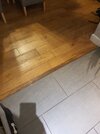- Joined
- 16 Dec 2018
- Messages
- 211
- Reaction score
- 2
- Country

I moved into a house that has downstairs wet UFH and is split into 4 zones. My wife frequently works from home and ideally, it would be cheaper to heat the room she's working from. I've tested this and just set the room stat in the living room to call for heat. I've noticed that when the single zone is calling for heat from the boiler, the boiler is constantly running for hours. Is this normal? I appreciate that if the room hasn't reached the desired temp, it will keep running and due to the nature of UFH, this can takes many hours.
If the above is normal, it doesn't seem very cost-effective. I'm sure I read that the UFH will take hot water from the boiler and mixes it with cold to feed the system, so this in itself doesn't seem great and then to keep the bolier running all day? Does it call for heat from the boiler at a lesser rate using less gas?
Bearing in mind my comments about trying to save money heating one zone, if the boiler is running for hours anyway, would I just be better off heating all zones?
If the above is normal, it doesn't seem very cost-effective. I'm sure I read that the UFH will take hot water from the boiler and mixes it with cold to feed the system, so this in itself doesn't seem great and then to keep the bolier running all day? Does it call for heat from the boiler at a lesser rate using less gas?
Bearing in mind my comments about trying to save money heating one zone, if the boiler is running for hours anyway, would I just be better off heating all zones?

